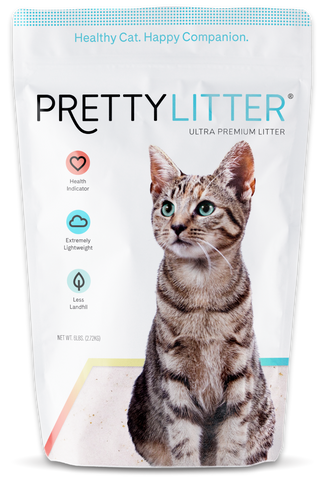Cat litter is the magical substance that makes life easier for owners around the world. It’s not all that much to look at, but its powers are impressive. If you’ve always wondered what makes cat litter super-absorbent, you’ve come to the right place.
We’ve broken down the subject of
cat litter for you, so, the next time you’re emptying your cat litter box, you’ll have a greater understanding of what you’re dealing with.
The Origin of Cat Litter
The idea of a substance designed to soak up cat urine is nothing new. During the early 20th century, people used everything from ash to sand to address the problem, with varying degrees of success, but cats aren’t all that enamored with these particularly harsh substances, and both have a tendency to stick to feet and fur, which causes cleaning headaches around the home.
During the 1940s, Edward Lowe discovered that granulated clay absorbed moisture and trapped bad odors, but crucially, cats didn’t track the clay through the house afterwards. Lowe recommended the solution to his friends, and the feedback he received was universally positive.
Lowe spotted a business opportunity. He filled five-pound bags with his granulated clay, and branded it “kitty litter.” This relatively simple solution to an age-old problem was an instant hit, and made Lowe rich beyond his wildest dreams.
Cat Litter That Prioritizes Their
Health & Your Happiness.
Get 20% + a Free Toy
Use Code PRETTYBLOG at Checkout
for 20% Off + a FREE Catnip Toy
What’s in Modern Day Cat Litter?
Lowe’s
granulated clay solution remained unchanged for around 40 years, but cat litter became yet more effective — and cheaper — when Thomas Nelson noticed that bentonite clay forms clumps when wet.
This new “clumping cat litter” brought down the cost of pet care. Owners were able to simply remove the clumps instead of replacing the entire cat litter box.
The main component of most modern cat litters is still clay. However, mining bentonite clay is relatively expensive. Cheaper clays often contain added silica, which delivers the all-important clumping quality.

The most expensive options on the market today are usually those made with silica gel. Each silica gel pearl contains a maze of tunnels. When the cat pees on it, the internal structures of the pearl trap the moisture, along with the smell. The moisture eventually evaporates, leaving the odor sealed away.
You can use most silica cat litter for up to a month at a time.
Eco-Friendly Cat Litter
Mining clay leaves a significant carbon footprint behind, and it can also ravage areas of natural beauty. There are also concerns about the safety of silica cat litters, as they can be harmful to dogs and other pets when ingested in large quantities.
A range of natural and eco-friendly cat litters are now available, and many of them address environmental and health concerns.
Renewable products such as wheat, sawdust, corncobs and peanut shells are being used to create highly effective cat litter. The absorbency and clumping of clay is replicated with the use of binding products such as starch.

Tired of your
home smelling like
you have a cat?
20% + A Free Toy
Use code PRETTYBLOG
Odor Control
Clay, silica and the other materials used to make cat litter have natural odor-absorbing qualities, but as manufacturers continue to develop their products, new and more effective agents are being developed all the time. Find out more about the difference between clay cat litter and
silica cat litter.
Carbon and baking soda both trap bad smells before they can develop, so they're used a lot in commercial cat litters.
Other natural odor-absorbents include cedar and pine, which are added to litter in the form of chippings. There are also added fragrance options that mask odors, but as we know, not all cats will tolerate the likes of lavender and vanilla in their toilet.
The world’s best cat litter brands keep homes clean and smelling fresh with the minimum of effort. Yes, clay is still a popular cat litter ingredient, but there are other options out there. Try a few solutions, and choose something you and your cat can both agree on.














